Nokia has announced its intention to try and nearly double its shareholding in Symbian by buying Psion shares in the venture, taking them to a 63.3% holding. Symbian, created arguably the most successful rich media Operating System (OS) which is primarily used on mobile phones and portable devices. Almost 2.7m units were shipped with their OS in the first six months of 2003 and it is currently owned by seven partners; Ericsson, Panasonic, Nokia, Psion, Samsung, Siemens and Sony Ericsson.
Nokia propose to pay Psion in two ways; £93.5 million (~$173.8m, ~€137.1m) as a fixed payment, plus £0.84 (~$1.56, ~€1.23) for every Symbian OS equipped phone Nokia sells during 2004 and 2005. Psion are currently estimating the deal will be worth around £135.7m (~$252.1m, ~€198.4m).
This is not the first time there has been a significant shift in the Symbian ownership. Back in August 2003, co-incidentally Symbian’s fifth anniversary, Motorola announced it would exit Symbian, selling its 19% holding. The two partners picking it the holding were Psion who increased its holding from 25.3% to 31.1% and Nokia bought the rest of the Motorola shares, increasing its holding from 19% to 32.2%. Psion paid Motorola £17m (~$31.5m, ~€24.8m) cash, valuing Symbian at that time at £300m (~$557.4m, ~€438.4m). The current Nokia/Psion deal values Symbian at £430m (~$798.9m, ~€628.4m).
At that time David Potter, Chairman of Psion gave hints at their possible exit from Symbian, “Psion will continue to play its role in driving Symbian towards the successful exploitation of its market. At the same time, realising the value of out investment in Symbian for the optimal benefit of Psion shareholders is a key strategic goal”
This leaves two questions hanging in the air. What will happen to Symbian’s other minority shareholders now Nokia is far and away the largest shareholder? Where are Psion going now?
The other owners, lead by Ericsson, the next largest owner (17.5%), may feel shouldered out of Symbian or indeed be uneasy providing income to their largest competitor. Currently the only other option they would have is to go the Microsoft route with their less than perfect offering.
A few years ago Psion got out of the consumer hardware business and they also sold Psion Software to Visto in February for an undisclosed amount. They are now placing their bets on wireless applications in the enterprise. Initially growing Teklogix, which manufactures rugged, wireless devices to help companies streamline their logistics. They also plan to move into providing support to mobile workers in the field, such as medical staff who are visiting patients in their home.
Teklogix is an area they feel they have a strong footing in this business already, making it is a defendable area with potential for great expansion. The CEO, Alistair Crawford says they plan to focus on RFID and Voice. The benefits of RFID in the warehousing business are well known. Psion also feel there is benefits in using voice input there, as the operators quite often need to have both hands free, or their not able to use their hands, for example in a refrigerator unit.
Psion is a company that has changed considerably over its 25 years from its start writing software, in particular Chess for Sinclair computers, through single handedly pioneered the handheld computer market back in the 1980’s., to defending themselves against the onslaught from Microsoft. We’ll watch this space with interest.
Nokia to purchase Psion shareholding in Symbian – Press release
Interviews with Chair and CEO of Psion
Visto Corporation Purchases Psion Software – Press release
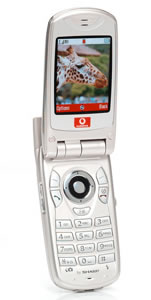 Vodafone has beaten the rest of the market to be the first to bring a mega-pixel camera to Europe. In a further development of their relationship with Sharp, it will be Sharp GX30.
Vodafone has beaten the rest of the market to be the first to bring a mega-pixel camera to Europe. In a further development of their relationship with Sharp, it will be Sharp GX30.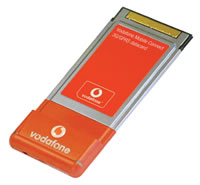 Vodafone have announced today that it will be starting its 3G service in Europe. Interestingly their first offering will be a data only service using the catchyly named Vodafone Mobile Connect 3G/GPRS data card, rather than a voice service. Slotting one of these into a laptop will provide data speed up to 384kbps.
Vodafone have announced today that it will be starting its 3G service in Europe. Interestingly their first offering will be a data only service using the catchyly named Vodafone Mobile Connect 3G/GPRS data card, rather than a voice service. Slotting one of these into a laptop will provide data speed up to 384kbps.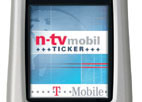 T-Mobile, the worlds second largest mobile phone service provider, has launched a service in Germany enabling their subscribers to watch television over GPRS to their mobile phones. A first for Germany, the service with the very catchy name, “n-tv mobile live TV”, will initial be offering a live stream of news direct to the handsets that have the Real player installed. Currently their Windows-based PDA offerings, T-Mobile MDA or T-Mobile MDA II and Symbian Series 60-based platforms, Nokia 3650, a Nokia 6600 and Nokia 7650 support this.Interestingly there will be no additional charges made on top of the cost of GPRS data transmission, although it should be noted that video is the most dense and bandwidth hungry form of data.This new service follows hard on the heals of a deal between T-Mobile and Kodak that enables their subscribers to send MMS-photographs or other digital photos to be printed at Kodak then deliver via post. To use “Fotoservice”, some software has to be installed on the Symbian-based handset that uploads the images to a private storage area. Given the current low resolutions of phone-based camera, there is an option to place a number of photos on the same 10×15 print.
T-Mobile, the worlds second largest mobile phone service provider, has launched a service in Germany enabling their subscribers to watch television over GPRS to their mobile phones. A first for Germany, the service with the very catchy name, “n-tv mobile live TV”, will initial be offering a live stream of news direct to the handsets that have the Real player installed. Currently their Windows-based PDA offerings, T-Mobile MDA or T-Mobile MDA II and Symbian Series 60-based platforms, Nokia 3650, a Nokia 6600 and Nokia 7650 support this.Interestingly there will be no additional charges made on top of the cost of GPRS data transmission, although it should be noted that video is the most dense and bandwidth hungry form of data.This new service follows hard on the heals of a deal between T-Mobile and Kodak that enables their subscribers to send MMS-photographs or other digital photos to be printed at Kodak then deliver via post. To use “Fotoservice”, some software has to be installed on the Symbian-based handset that uploads the images to a private storage area. Given the current low resolutions of phone-based camera, there is an option to place a number of photos on the same 10×15 print.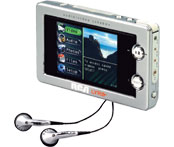 Giant media group, Thomson, has announced the launch of a portable multimedia player that has 20Gb of hard drive storage and a built in colour screen which plays videos, show photographs and plays music. Sold in two guises, Europe (THOMSON LYRA Audio/Video Jukebox PDP 2860 – €749, ~£520) and USA (RCA RD2780 – $499.99), it will play back both MPEG-1 & MPEG-4 video and mp3, Windows Media Audio. It can also be upgraded to mp3PRO.
Giant media group, Thomson, has announced the launch of a portable multimedia player that has 20Gb of hard drive storage and a built in colour screen which plays videos, show photographs and plays music. Sold in two guises, Europe (THOMSON LYRA Audio/Video Jukebox PDP 2860 – €749, ~£520) and USA (RCA RD2780 – $499.99), it will play back both MPEG-1 & MPEG-4 video and mp3, Windows Media Audio. It can also be upgraded to mp3PRO.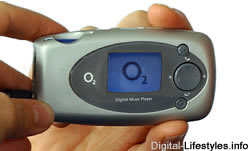 mm02, UK cellular provider, have launched the first European “over the air” music download service.
mm02, UK cellular provider, have launched the first European “over the air” music download service.